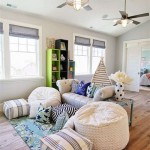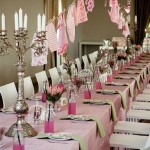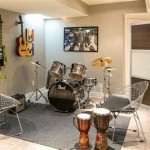Montessori Room Decoration
Montessori room decoration plays a crucial role in fostering a child's independence, concentration, and love for learning. It creates an environment that encourages exploration, discovery, and self-directed activity. Unlike traditional classrooms, a Montessori environment is carefully prepared to meet the developmental needs of the child, with every element intentionally chosen to facilitate learning and growth.
A key principle of Montessori room decoration is creating a sense of order and beauty. Everything has a place, and children are encouraged to return materials to their designated spots after use. This orderliness helps children develop a sense of responsibility and contributes to a calm and peaceful atmosphere. Natural materials like wood, cotton, and silk are preferred, creating a warm and inviting space. Aesthetics are also important, with artwork displayed at the child's eye level and natural light prioritized.
Functionality is paramount in a Montessori classroom. Furniture is child-sized, allowing children to access materials and move around the room independently. Low shelves display materials attractively, inviting children to choose activities that interest them. The environment is organized into distinct areas for different subjects like language, mathematics, sensorial exploration, practical life, and cultural activities. Clear labeling and visual cues aid children in navigating the space and selecting activities.
Freedom of movement is a fundamental aspect of the Montessori philosophy. Children are encouraged to move freely within the prepared environment, choosing activities and working at their own pace. The room layout should facilitate this movement, with ample space for individual and group work. Comfortable floor mats define work areas and provide a designated space for children to concentrate on their chosen activities.
Accessibility is another important consideration. Materials are placed within easy reach of the children, allowing them to select and return materials independently. This fosters a sense of autonomy and encourages self-reliance. Tools and materials are designed to be manageable for small hands, promoting fine motor skill development and self-confidence.
The use of natural light is highly valued in Montessori environments. Large windows allow ample natural light to flood the room, creating a bright and cheerful atmosphere. Soft, natural lighting is preferred over harsh fluorescent lights, creating a calming and inviting learning space. Where natural light is limited, warm-toned artificial lighting can be used to supplement.
Real-life experiences are central to the Montessori approach. Practical life activities, such as pouring, cleaning, and food preparation, are incorporated into the classroom environment. Child-sized tools and utensils allow children to participate in these activities, developing essential life skills and fostering independence. The environment often includes a dedicated area for these practical life exercises, equipped with real-life materials and tools.
Sensory exploration is another vital component of Montessori education. The classroom environment includes a variety of materials that engage the senses, such as textured fabrics, colored tablets, and sound cylinders. These materials help children refine their senses and develop their perceptual abilities. The sensorial area is typically organized with materials arranged according to difficulty and sensory modality.
Nature plays a significant role in Montessori education. Plants, natural materials, and opportunities for outdoor exploration are incorporated into the environment. This connection to nature fosters a sense of wonder and respect for the environment. A dedicated nature area within the classroom or access to an outdoor garden can provide children with opportunities to interact with the natural world.
Cultural awareness is fostered through the inclusion of materials and activities that represent different cultures. Books, artwork, and music from around the world expose children to diverse perspectives and promote understanding and appreciation of different cultures. This global perspective helps children develop a sense of interconnectedness and global citizenship.
Minimalism is a key aspect of Montessori room decoration. The environment is kept free from clutter and distractions, allowing children to focus on their chosen activities. Only necessary materials and furniture are included, creating a calm and peaceful atmosphere. This minimalist approach helps children develop concentration and focus.
Flexibility is essential in a Montessori classroom. The environment is adaptable to the changing needs and interests of the children. Materials are rotated regularly to maintain interest and challenge, and the layout of the room can be adjusted to accommodate different activities. This flexibility ensures that the environment remains engaging and stimulating for the children.
Observation is a crucial tool for Montessori educators. By observing children's interactions with the environment, educators can identify their interests and needs, and adjust the environment accordingly. This ongoing observation ensures that the environment remains responsive to the developmental needs of each individual child.
The creation of a well-prepared Montessori environment requires careful planning and attention to detail. Every element of the room, from the furniture to the materials, is intentionally chosen to support the child's development. This thoughtful preparation creates a rich and stimulating learning environment that fosters independence, concentration, and a lifelong love of learning.

How To Design A Montessori Kid S Room
Montessori Bedroom Ideas For A Three Year Old How We

Montessori Style Bedrooms For Infants Toddlers Setup Inspiration Ideas Nature

Montessori Decoration Ideas An Ideabook By Urooj Shahid

Pin On Nursery
Montessori Spaces Design A New Project How We

How To Design A Montessori Kid S Room

Step By Guide To The Perfect Montessori Toddler Room Decor Bedroom

Revamp Your Toddler S Bedroom Montessori Style St Andrew Nursery

How To Create A Little Girl Montessori Style Bedroom With Floor Bed







